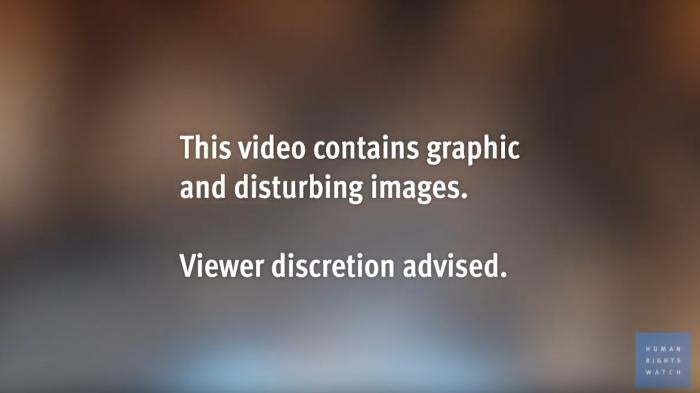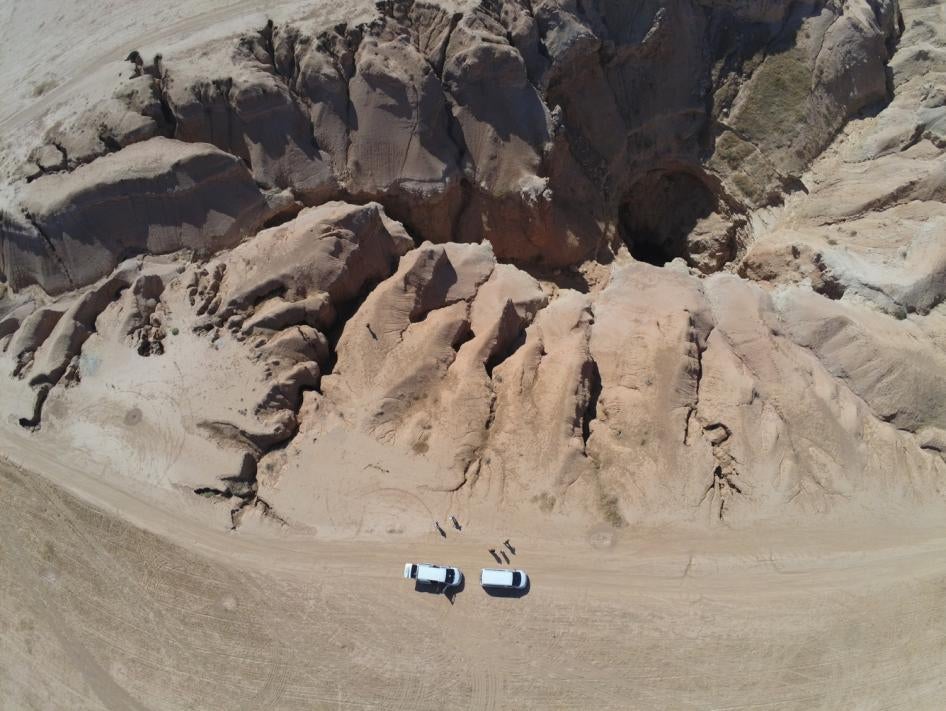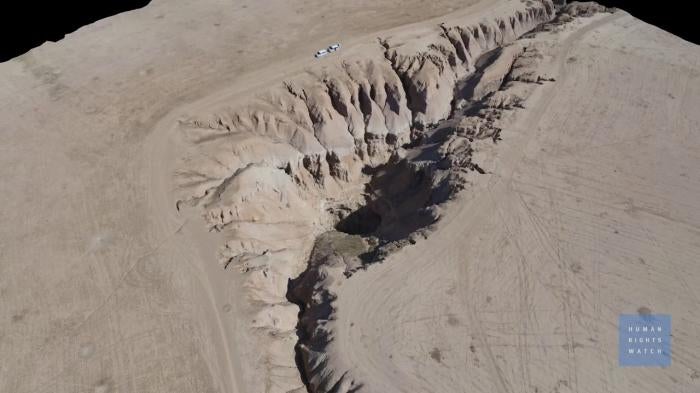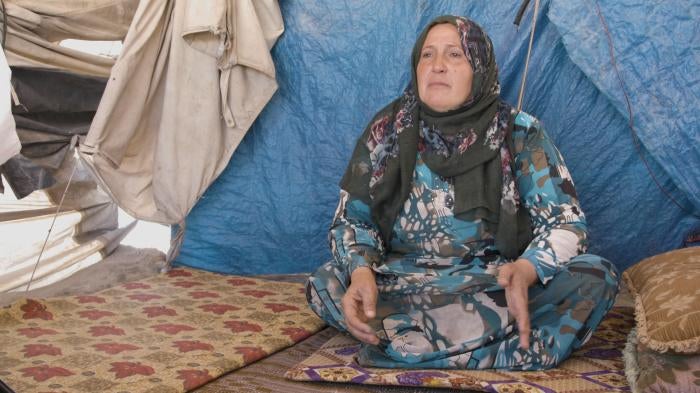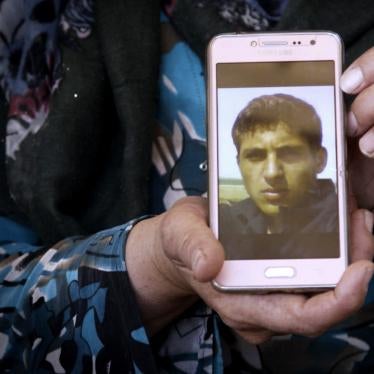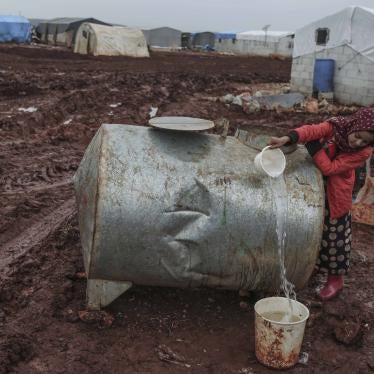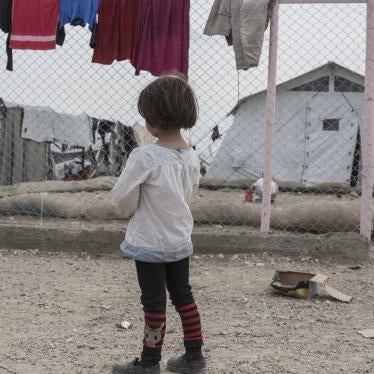(Beirut) – The Islamic State (also known as ISIS) used a gorge in northeast Syria as a dumping ground for the bodies of people it had abducted or detained, Human Rights Watch said in a report released today. A Human Rights Watch investigation and drone flight into the gorge highlight the need for the authorities to secure the site, remove human remains, and preserve evidence for criminal proceedings against the killers.
ISIS controlled the territory around al-Hota gorge – 85 kilometers north of Raqqa city – from 2013 to 2015. Across Syria, more than 20 mass graves containing thousands of bodies have been found in areas formerly held by the armed group. The Human Rights Watch investigation of al-Hota involved interviews with local residents, a review of ISIS-recorded videos, analysis of satellite imagery, and flying the drone into the 50-meter-deep gorge.
“Al-Hota gorge, once a beautiful natural site, has become a place of horror and reckoning,” said Sara Kayyali, Syria researcher at Human Rights Watch. “Exposing what happened there, and at the other mass graves in Syria, is crucial to determining what happened to the thousands of the people ISIS executed and holding their killers to account.”
The area around al-Hota is currently controlled by the Turkish-backed Syrian National Army, while Raqqa city remains under the control of the Kurdish-led Syrian Democratic Forces. Whoever controls the gorge has an obligation to preserve the site, identify the missing, and investigate their deaths, Human Rights Watch said.
When ISIS controlled the Raqqa area, its members threatened people with being thrown into al-Hota, local residents recalled. Some said they saw bodies scattered along the gorge’s edge. An ISIS-recorded video posted to Facebook in 2014 shows a group of men throwing two bodies into the gorge. The clothes on the men match those worn by two people who are shown in another video getting executed by ISIS.
The inspection of al-Hota with a Parrot ANAFI drone revealed six bodies floating in water at the bottom. Based on the state of decomposition, the bodies were dumped there long after ISIS had left the area. The identities of those victims and their causes of death remain unknown.
Geological maps and a 3D topographic model of al-Hota from the drone imagery suggest that the gorge goes deeper than the drone was able to see, so more human remains most likely lie below the water’s surface.
Some local residents said they heard about other anti-government armed groups throwing the bodies of government soldiers and pro-government militia fighters into al-Hota before ISIS controlled the area, though none of them had seen this themselves.
A Human Rights Watch report released in February 2020 documented that ISIS abducted and detained thousands of people during its rule in Syria, and executed many of them. Among the missing are activists, humanitarian workers, journalists, and anti-ISIS fighters from a range of groups, as well as local residents who ran afoul of the armed group.
The effort to exhume the ISIS mass graves has been faltering and incomplete, in part due to the fluid security situation. With limited resources and minimal outside support, local groups, such as Raqqa’s First Responders Team, have been conducting partial exhumations, but the sites are still not protected and have not been examined in line with international best practices. No teams are working at al-Hota or the apparent mass grave sites that are currently under Turkish control.
In a positive step, on April 5, the Syrian Democratic Council (SDC), a civilian authority currently responsible for areas formerly held by ISIS in parts of northeast Syria, announced the creation of a new working group to help identify what happened to the missing people and those kidnapped by ISIS. The Kurdish-led SDC is unlikely to get access to areas controlled by Turkey and Turkish-backed factions.
Turkey and the Syrian National Army should treat al-Hota and other mass graves in the area as crime scenes and secure the sites so potential evidence is not destroyed, Human Rights Watch said. They should ensure that al-Hota is cleared of booby-traps and unexploded munitions so that forensic experts can descend into the gorge, locate and remove bodies, and begin the painstaking work of identification.
“Whichever authority controls the al-Hota area is obliged to protect and preserve the site,” Kayyali said. “They should facilitate the collection of evidence to hold ISIS members accountable for their horrendous crimes, as well as those who dumped bodies in al-Hota before or after the ISIS rule.”
